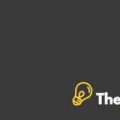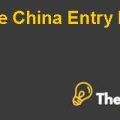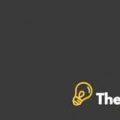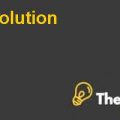The Tate’s Digital Transformation Case Solution
INTRODUCTION
In the mid-20 century, digital media transformed every industry in the world. However, Tate Company was initially started by Henry Tate. He was a British industrialist and sugar merchant whose fortune was made when he was purchasing the patent for sugar cubes, long a staple for the English tea ritual. Tate was a generous philanthropist and a humanitarian. On the other hand, John Stack was the visionary Head of Digital Transformation at the Tate Company, along with a collection of four major art galleries in the United Kingdom.
In a similar manner, Tate had grown into a network of four galleries, including Tate Britain, Tate Modern, Tate St. Ives, and Tate Liverpool respectively.However, the network of four galleries collectively housed 70,000 artworks. By doing so, Tate Liverpool served the public of Northwest England, whereas Tate St. Ives was situated in a vibrant artist colony on the Cornish coast of England, where the artist, including the abstract expressionist Mark Rothko, traveling to the sea to take advantage of the beautiful light.
On the other hand, despite all the organizational and physical structure changes throughout the year, Tate consistently stayed true to its founding mission: “to boost the public’s enjoyment and to understand the British art, and of the 21 st century contemporary art.” However, Tate 850 employees were proud to be the stewards of both an esteemed collection. Over the period of 2013, approximately 8 million people visited the Tate galleries per year. Tate Modern was the biggest draw among the other three galleries, with 5.5 million of visitors in the period of 2012, and 40 million visitors since it’s initially starting in 2000.
In addition to this, many of the visits were driven by Tate’s members. However, the Tate’s nearly 105,000 members represented the largest arts membership group in Europe, and showed an 86 percent annual renewal rate. The agitation surrounding the initiating of Tate Modern had helped to grow the membership fourfold. Going further, increasing the age and ethnic diversity of visitors was a key objective. However, throughout its history, the company, like many art museums, had influenced to a primarily white, middle, and upper class, highly educated, and older audience. Currently, only one-quarter of visitors was under age of 25, but Tate's fastest-growing membership group was the young Patrons, presently numbering 500. However, nearly 650,000 of the visitors to the museums were Asian, black or came from other minority ethnic backgrounds.
Furthermore, the Tate Company, like most British museums, received a remarkable portion of its annual funding from the culture by British Department, Media& Sport. However, for the period of 2012-2013, government aid accounted for around £34.9 million of Tate’s £157.8 net income. Despite these funding covers, the Tate had most successful year in the history was 2012-2013, with an increase of nearly 700,000 visitors over the period of prior year. However, the popular Damien Harris exhibition had attracted 463,000 visitors, and create a record for the most popular solo artist exhibition in Tate’s history. In the same manner, this was a remarkable year for Tate’s company in their history.
The Tate’s Digital Transformation Harvard Case Solution & Analysis
PROBLEM STATEMENT
In Tate Company, John Stack was the visionary Head of the Digital Transformation along with a collection of major four art galleries in the United Kingdom. Moreover, the art gallery of Tate Modern was the most visited gallery devoted to modern and contemporary art in the world. Tate Modern had just completed a remarkable decade of physical expansion, which included nearly 2000 opening of a new building.Whereas, at the Backside Power Station to its burgeoning collection, and an exciting 2012 expansion into the Tanks, the deserted oil of tanks of the power station whose large concrete cylinders were transformed into spaces dedicated to performance art and further large installations.In addition to this, Stack was the architect of the new building of Tate’s “Fifth gallery,” its online presence. He was working to develop a new digital strategy. However, this included as a dimension of everything the Tate did, both physically and virtually. This effort was raising several questions that need to be addressed before implementing the new digital strategy...............
This is just a sample partial case solution. Please place the order on the website to order your own originally done case solution













